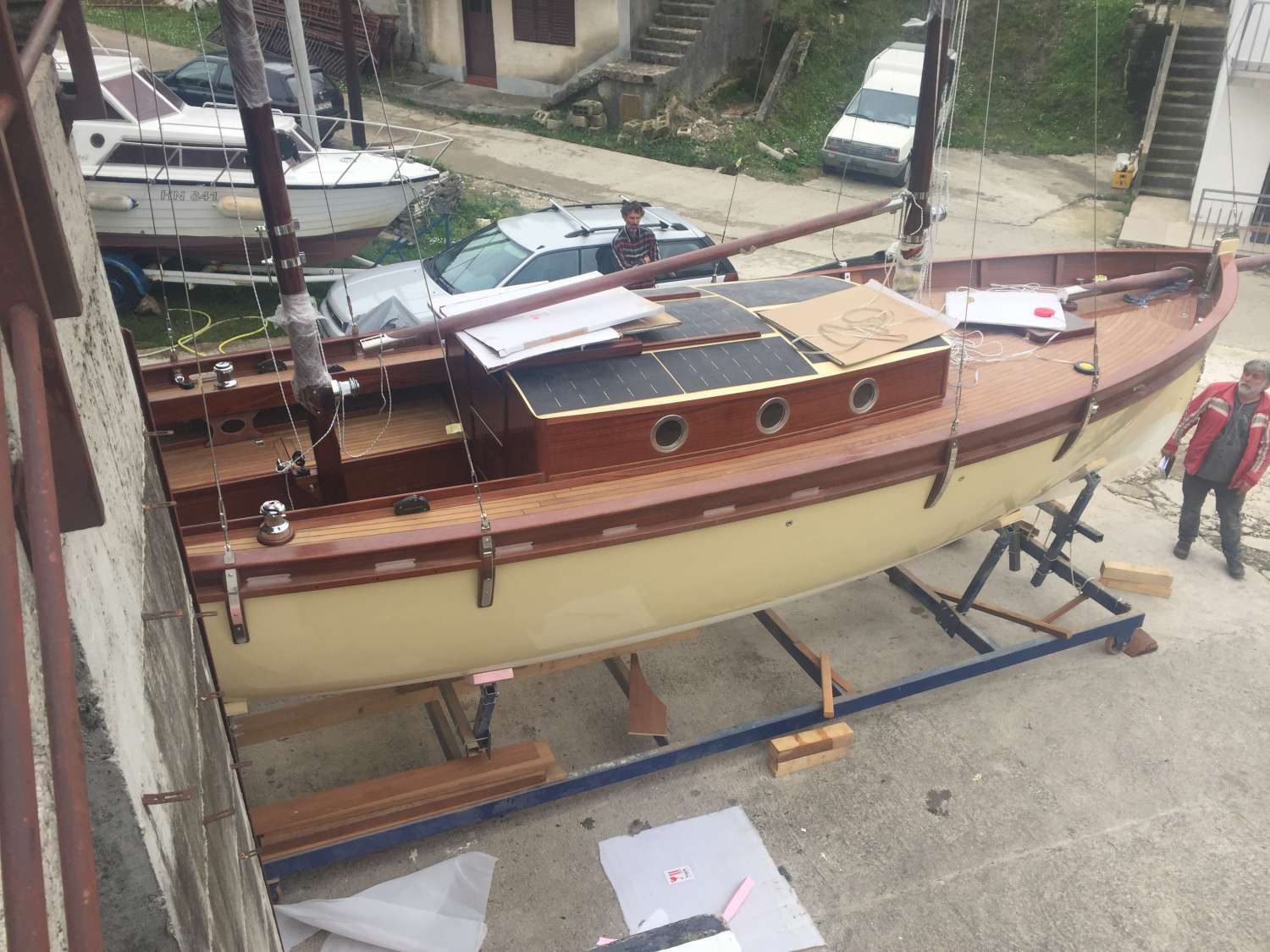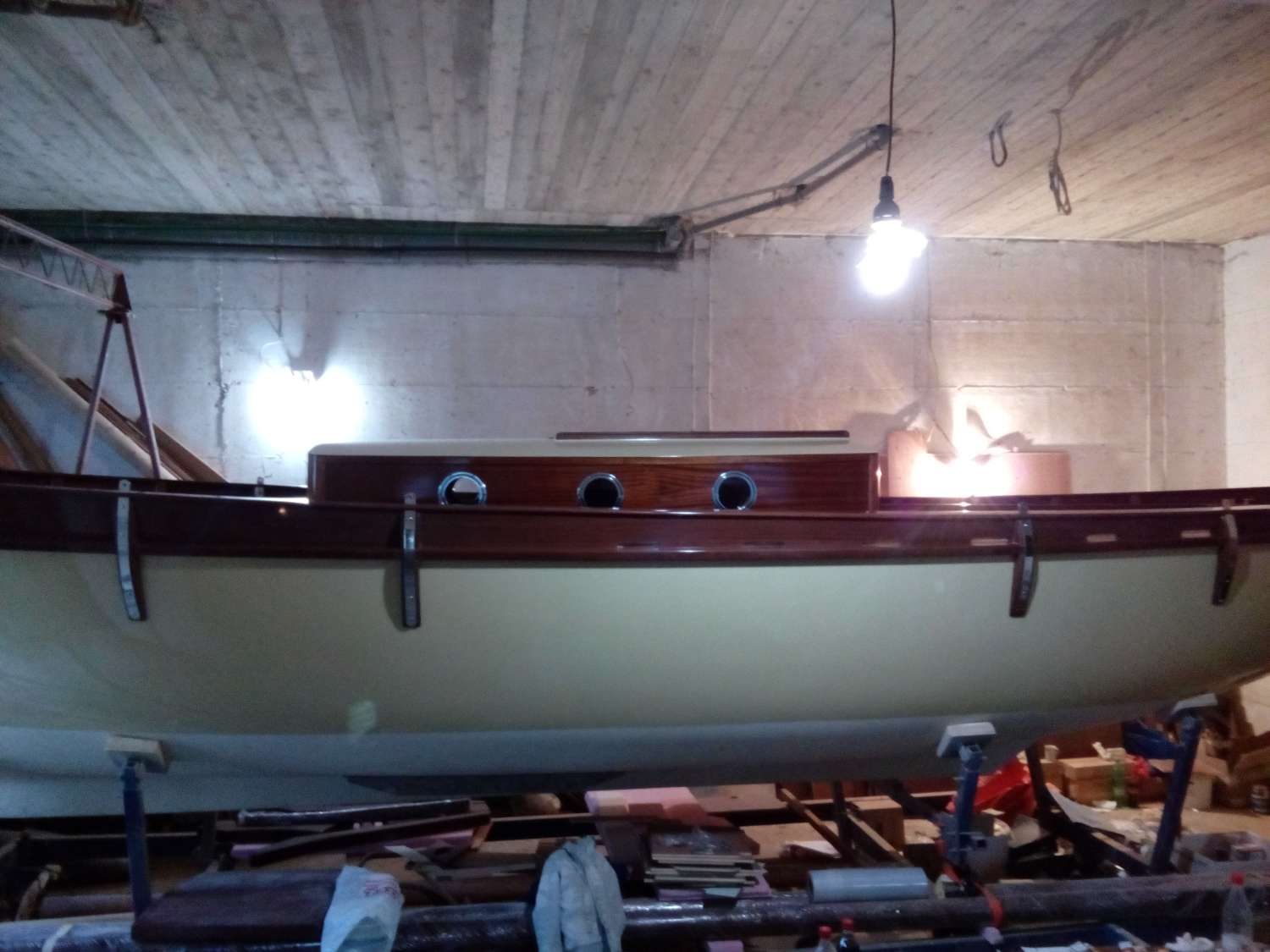Phase 1
The Boka solar sailing ship is a prototype of an energy-independent vessel, conceived, designed and realized from 2016 to 2019.
The hull of the ship is of the "Cutter" type, the length of the hull is 9, 5 m, the shadow over the entire length is 13 m, with 2 masts, 4 sails, the type "Schooner" of the displacement of 3.5 tons.
The ship has a keel - of revolutionary design, a patent of the famous Ship Designer Ivan Erdevicki.
Equipped with electric motor Tema 12 kw, gel batteries 48 v, 200 ah, which gives autonomy for cruising in economy mode 3 - 4 h at a cruising speed of 3 / 4knts.
If the ship is driving at full power and with more gas, it can go at a speed of 8 knots, but then its battery life is only 45 minutes.
The ship also has solar panels, installed power of 500 w, as well as a charger with AC 220 v 50 a.
It has a toilet with shower, sleeping cabin, stove, sink, refrigerator, navigation system and autopilot.
The main goal of the project was to prove that for the operation of sailboats of this type, the installed panel power is sufficient for daily autonomy of sailing, entering and necessary maneuvering on the engine without any charging from land during the entire nautical season.
The link includes the construction phases with a photo gallery.
https://ramboamadeus.com/sailing
The project is both regional and international, it has engaged so far - Engineers and craftsmen from Herceg Novi, Kotor, Dubrovnik, Split, Pula, Virovitica, Belgrade, Novi Sad, Vancouver.
Solar Panels are from China, Larch for Mast from Siberia, Teak for deck from Burma, ropes from Germany, Deck equipment from Italy, Navigation system and automatic rudder from Great Britain, rudder fittings from Denmark.
We started raising money - an Indiegogo startup and raised approximately one third oft the total amount, donated, mostly from the ex YU diaspora around the world.
Also, UNDP Montenegro co-financed us with a significant amount and then I myself, with my own funds, completed the whole project, which includes volunteering work lasting 3 years (this work continues).
Boka's solar sailing ship was successfully launched on May 1, 2019. The corona viruses epidemic hindered us in its promotion, but the ship has shown its attractiveness and functionality so far.
Here is the link on launch day: https://youtu.be/UbBsX6vK0VY
https://www.youtube.com/watch?v=XZyEonhfj-A&t=199s
https://www.youtube.com/watch?v=PzEgJVuhm_w

The ship proved its sustainability in the first season of operation in 2021, it earned enough money during the season for its maintenance plus per diems for the captain, so we can hardly wait for the 2022 season.
We believe that the next, sister ship could be thrown out for twice less money, and if it was done in series, we would probably be able to reduce its price to one third of the prototype.
So, this phase is over, it's time for the next one!
Phase II
Now, in phase II, a little more development awaits us. We want to insert more modern, lighter and more efficient batteries, to lighten the rigging and increase the surface of the sails, to install a "folding" propeller so that the ship realizes its full maritime capability, sailing speed, and increases engine autonomy.
In addition, we plan to make a promotional film about construction, subsequent improvements and the next launch, and prepare promotional steps for phase IV. For this project, we need about 50,000 e.

Phase III
A cruise with an accompanying ship, a team of 8 people, lasting 2 months, I believe that we can achieve the budget for this through some environmental project, as well as with some television that is watched in the region. Photographs and videos are used for promotional activities from Phase IV.
Phase IV (I'm thinking about it)
Phase four is the preparation of a business plan and making a project for serial production of this prototype, increased to a comfortable size for cruising, which means that the ship's interior has a standing height and comfort for a longer stay. Hull length 12.5 m, over only 16 m.
In phase IV prototype 1, with the improvements made, the target group in the world is promoted and potential buyers are lobbied for future orders, fairs are visited, a promo film about the ship is presented. We start this segment of phase IV in parallel with phase II if the conditions are met.
Preparation for serial production of an enlarged prototype, realization, marketing, sales.
(Phases II, III, IV and V are of course intertwined, depending on the budget and the development of the plan.)
Impacts of the project through all 5 phases (it is enough to type in google "solar sailing ship rambo amadeus" at this moment and you will see that the ship has already made quite an impact.
https://www.google.com/search?client=opera&q=solarni+jedrenjak&sourceid=opera&ie=UTF-8&oe=UTF-8
In the meantime, the large shipyard "Hanse" has started to operate "solar sailboats", but without a patent on the keel, retrofutur approach, innovation in digital marketing, promotional rides with UNICEF.
1. Development of environmental awareness
2. Promotion of eco-mobility
3. Promotion of Low Carbon Print in Nautical Tourism
4. Beneficial impact on the environment, water, land, air
5. Increasing independence from fossil fuels
6. Noise reduction (the ship is silent and in engine mode)
7. Reduction of coastal erosion caused by waves of classic motor boats
8. No harmful effects on marine flora and fauna
9. The project is regional, promotes regional cooperation
10. The project is international, rebranding the region as capable of sophisticated and environmental projects
11. Innovative in promotion, applying the latest methods in digital marketing







